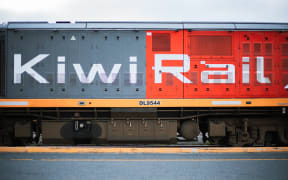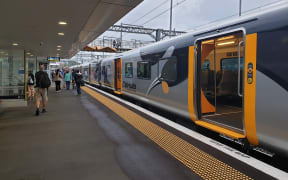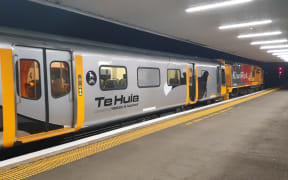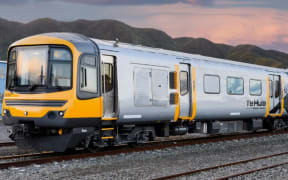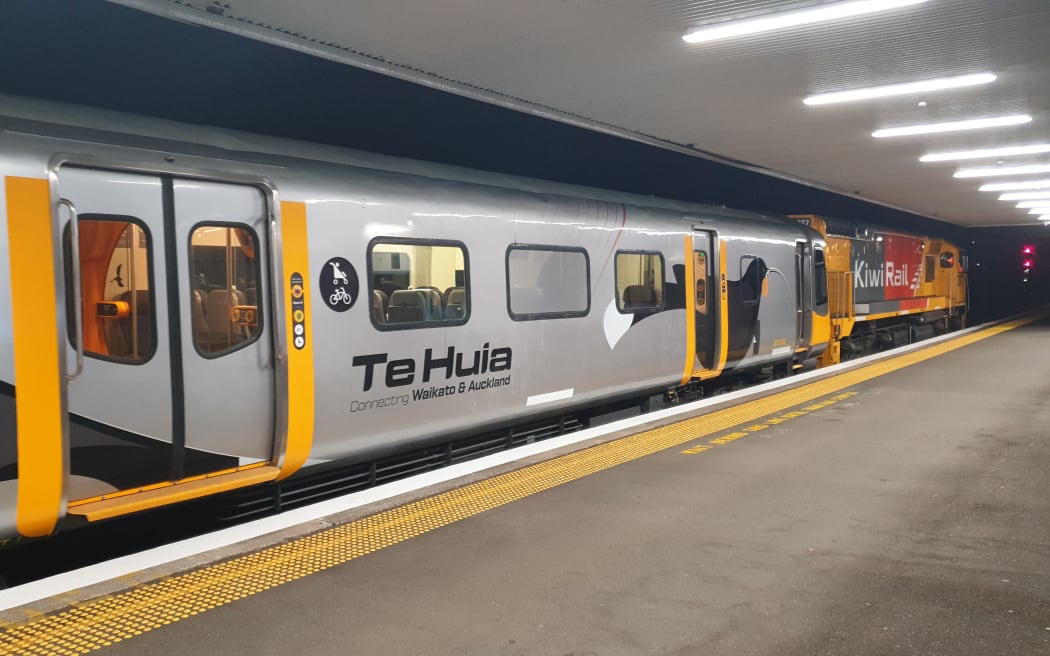
The Te Huia train was restricted in its service earlier this year after two safety incidents. (file image) Photo: RNZ / Gill Bonnett
Waka Kotahi's approach to train safety is being called adhoc and dangerous, and the safety model called into question, after RNZ found train safety incidents appear to be handled inconsistently.
On 13 February, a Greater Wellington train failed to stop for a red signal, bringing it within about 425 metres of another train. The train had 250 passengers on board.
This was similar to the safety incident which face the Hamilton to Auckland train, Te Huia, when a train had 90 passengers on board and was 200m from another train.
In that case Te Huia train operator, KiwiRail, was publicly sanctioned and its service restricted. The Wellington train operator, Transdev, faced no sanction and no restrictions.
Public Transport Users Association (PTUA) coordinator Jon Reeves believed Waka Kotahi simply did not understand rail and rail safety.
"I think what happened with Te Huia incident shows there is massive inconsistency with the way rail safety issues are handled and it's incredible that NZTA seems to be quite adhoc in the way that they operate.
"You're playing with the lives of not only the passengers but also the crew and you'd think they'd be very consistent in the way they handle it, it's almost to the point that NZTA is incapable of handling rail safety."
Rail and Maritime Union (RMTU) general secretary Todd Valster said Te Huia was one of the most modern trains on the New Zealand rail network with a tonne of safety features which Wellington trains did not have.
But he believed Te Huia was singled out because of complaints from the Auckland train operator and possibly Auckland Transport.
"From there, NZTA has reacted. NZTA could possibly respond differently to the level of complaints it is getting from the regional councils."
RNZ was awaiting for comment from Auckland Transport about whether they had complained about Te Huia at anytime before the train was sanctioned.
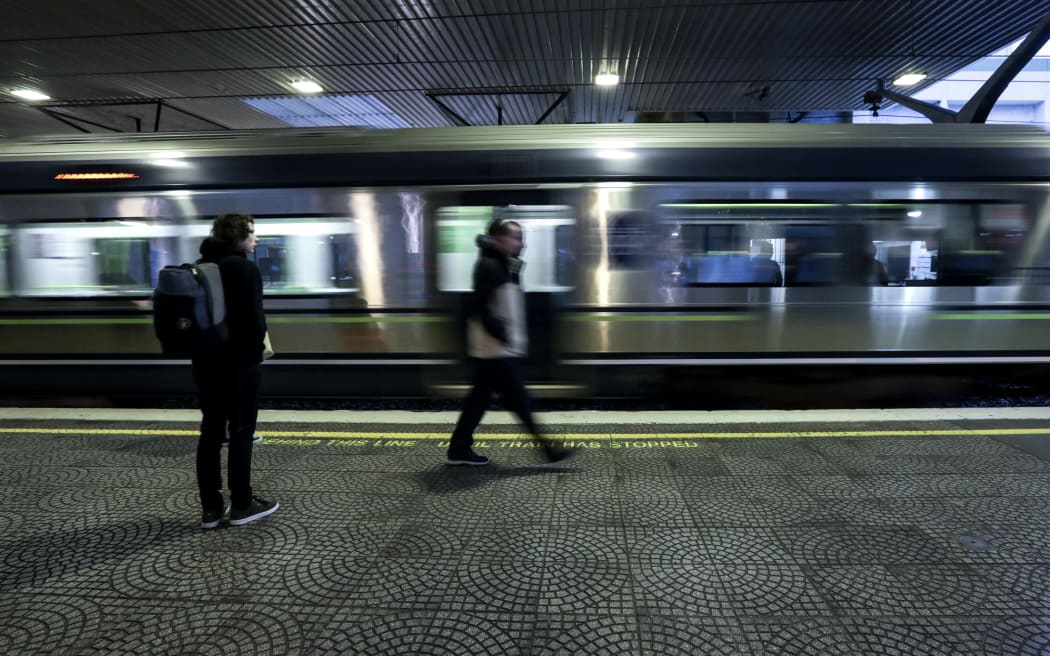
On 13 February, a Greater Wellington train failed to stop for a red signal, bringing it within about 425 metres of another train. (file image) Photo: RNZ / Rebekah Parsons-King
Waka Kotahi says regulatory action is 'measured and targeted to the risk'
Greater Wellington's Metlink group manager Samantha Gain said safety was of paramount importance for Metlink and Transdev - which operates the region's rail services - and that Waka Kotahi informed Metlink they were satisfied with Transdev's immediate response to the 13 February incident and deemed no further action was required.
The fact the incident was officially closed out by Waka Kotahi meant Greater Wellington did not have any ongoing concerns about the incident.
It also noted the train which was 425 metres away was also moving away from the train which failed to stop.
RNZ asked Waka Kotahi how the Wellington safety incident was different from the case which faced Te Huia, and why the Wellington train did not pose the same or greater risk to the public as the Te Huia incident, given it had nearly three times the number of passengers on board.
Waka Kotahi declined an interview request. Instead, a statement from a spokesperson said: "Actions taken by Waka Kotahi regarding the Te Huia service were specific to the risks associated with the events. The Te Huia incidents are not directly comparable in terms of risk when compared to the Wellington incidents you have referenced.
"It is extremely rare for the exact circumstances of an incident to be repeated across different services, regions or operating environments, which is why the regulatory activity undertaken by Waka Kotahi is measured and targeted to the risk identified rather than a broad-brush approach."
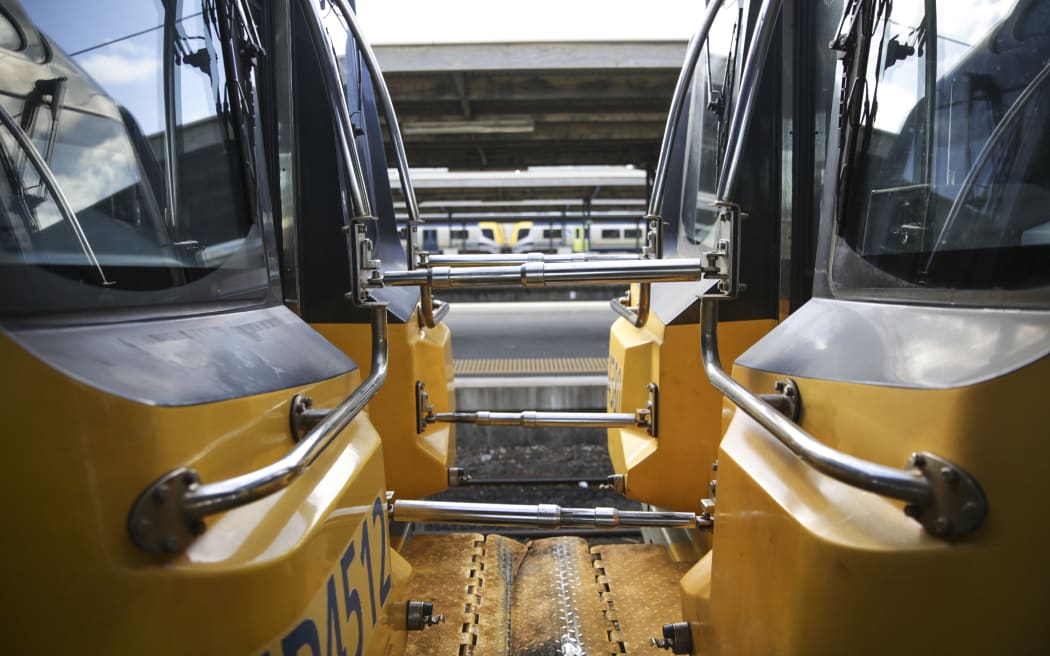
Between 1 January and the beginning of July, 27 other red signal events were reported across the network. (file image) Photo: RNZ / Richard Tindiller
'Light touch' approach
A report prepared by industry consultants for the ministers of transport, state-owned enterprises, and finance in June - titled 'KiwiRail's Handling of Recent Disruptions to Passenger Services' - raised issues around the safety standards for metro networks, and noted Waka Kotahi was "considered to take a 'light touch' approach".
"We have heard sufficient concern from participants that leads us to conclude the safety regulator must rapidly move to a proactive approach to ensure we further reduce the existing and emerging safety risks in metro networks," said report writers Rick van Barneveld and Greg Pollock.
RMTU's Todd Valster explained what a 'light touch' means: "That's the model, of rail companies putting forward their safety case, being approved, and then getting audited yearly. Sometimes they do a special audit, but that's quite rare."
The union believed NZTA should regulate in a more appropriate way.
RNZ was also awaiting response from Waka Kotahi about whether the Wellington safety incident was treated with a 'light touch' and the Te Huia incident with a more 'proactive approach'.
PTUA's Jon Reeves said it was all too murky.
"I can't understand the reason why, because if you have an accident and 90 die on one train but have another accident and potentially 400 die on another - why would you have a very changeable system? It should be really upfront, transparent, and something everyone can rely upon, passengers and the train operators as well."
Last month, RNZ reported between 1 January and the beginning of July, 27 other red signal events were reported across the network. Two of these were Te Huia, two were other Auckland metro trains and six were Wellington metro trains.
The other 17 incidents involved freight trains and maintenance vehicles in locations such as Tauranga, Mt Eden, Huntly and Dunedin.

